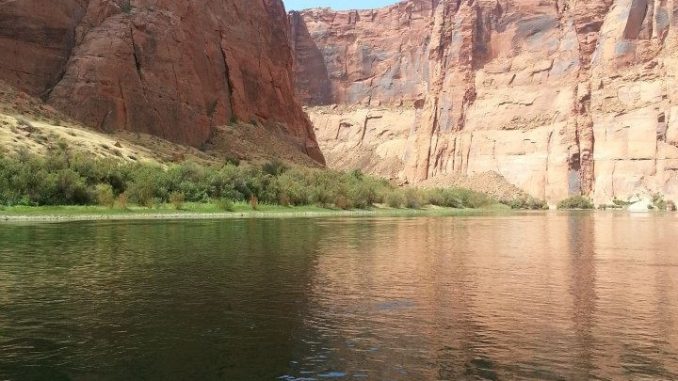
By Kay Whatley
For future homebuyers, what will be the biggest draw? Will the perfect location, convenience to school, work, and shopping, or beautiful settings still be driving home sales? Or will future buyers gravitate toward homes with clean wells or potable city water?
It might seem silly to think that real estate ads could be touting “drinkable well water” or “water source passed testing.” Yet with continued pollution, infrastructure degradation, and selling off of water supplies (cheaply) to corporations (who alone benefit from such arrangements), such real estate ads may be coming.
Sure, I could be wrong. Looking at recent years’ news, though, the US appears to be on a path to fewer areas with drinkable water sources. Here is a snapshot of 2018 news stories about water issues:
- Lucama, North Carolina (Wilson County): Discolored tap water, residents worried about drinking it, reported by CBS 17 in October 2018 — www.cbs17.com/news/local-news/state-intervenes-wilson-county-town-could-face-fines-over-discolored-water/1536308350 (related articles also available on CBS 17 website)
- Wilmington NC: Widespread chemical contamination… investigations ongoing — www.cbsnews.com/news/wilmington-nc-cape-fear-river-water-tainted-genx-dupont-chemours
- Cape Fear River: Contamination going on for decades — www.cbsnews.com/news/wilmington-nc-cape-fear-river-water-tainted-genx-dupont-chemours
- Michigan: Chemical contamination — www.cnn.com/2018/08/16/health/tap-water-crisis-toxic-michigan-pfoa-pfas/index.html
- Martin County, Kentucky: Water contamination affecting thousands, discovered in 2000, and described in October 2018 by NPR article, ‘You Just Don’t Touch That Tap Water Unless Absolutely Necessary’ — www.npr.org/2018/10/03/649850498/you-just-don-t-touch-that-tap-water-unless-absolutely-necessary
- Compton, Watts/LA, California: Contaminated, undrinkable water and a general water shortage has lead to inclusion of a safe, clean water measure on LA County’s November 2018 ballot — comptonherald.org/l-a-supervisors-send-safe-clean-water-measure-to-november-2018-ballot (Compton Herald news site includes other water-issue articles)
A quick news search finds numerous communities nationwide dealing with shortages of drinkable water and chemical contamination. As more communities face infrastructure failures and disasters, potentially leading to more testing, the results may bring the nation’s water issues to the forefront. Other issues are eclipsing the problem, for now. The media and the people of the US are overdue in waking up to drinking water shortages.
Until major infrastructure, water storing, and widespread water protecting become the norm, the future looks bleak. Imagine potential home buyers searching for real estate, and instead of drooling over vast expanses of decking or chef-quality kitchens, they put in premium offers for homes with deep, private wells, or near planned infrastructure updates. Or, those who can afford it search for exclusive communities with their own monitored water supply. Farm ponds, far-distance from pipelines, or private water storage systems could become the features of highest interest among home buyers with the financial means to purchase them.
And those who cannot afford a home with clean water? They’ll be relegated to buying homes with undrinkable water and choosing whether to go without or buy bottled water. (In some cases, likely the bottled water for sale is the same water municipalities have “sold” to corporations for less than pennies. But that’s tangential to my point and maybe for a future article.)
The point is that finding a place to live where the water is safe to drink may become difficult in the not-too-distant future. For communities with infrastructure issues, where water supplies are dwindling, near fracking/chemical contaminated water supplies, in areas of lengthening droughts, or in areas hit by natural disasters, bottled water has become their norm. You may be thinking of Flint, Michigan (where homes are still selling, though I wonder if sale prices have been impacted); but, there are more areas of the US where water reaching homes is unsafe to drink. Heck, around North Carolina there are people living in homes where the wells are not drinkable, or have run dry, or city water quality has fallen.
So, the next time that you face a move, in addition to checking out the local schools and community services, you just might want to check for water issues in the area. And, you might think about testing the water before you put in an offer on any property.
Additional Resources
Annual US Infrastructure Report Card by the American Society of Civil Engineers (ASCE) — www.infrastructurereportcard.org (2017 rating of D+)
Quartz article on Earth’s dwindling water supplies and recycling of sewage/urine to drinkable water — qz.com/1353828/dams-and-reservoirs-cant-save-us-this-is-the-new-future-of-water-infrastructure (already being done in some communities)
US Environmental Protection Agency’s 6th Drinking Water Infrastructure Needs Survey and Assessment — www.epa.gov/drinkingwatersrf/epas-6th-drinking-water-infrastructure-needs-survey-and-assessment (dated March 2018; downloadable PDF)
US Government Accountability Office information on monies needed versus monies spent — www.gao.gov/products/GAO-17-559 (large gap)
Ed. Note: See article on climate change and water loss that may affect mid-western states here.
Originally published October 24, 2018. Updated December 29, 2019.


